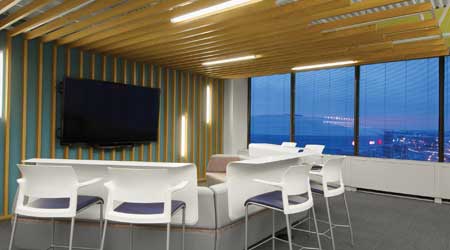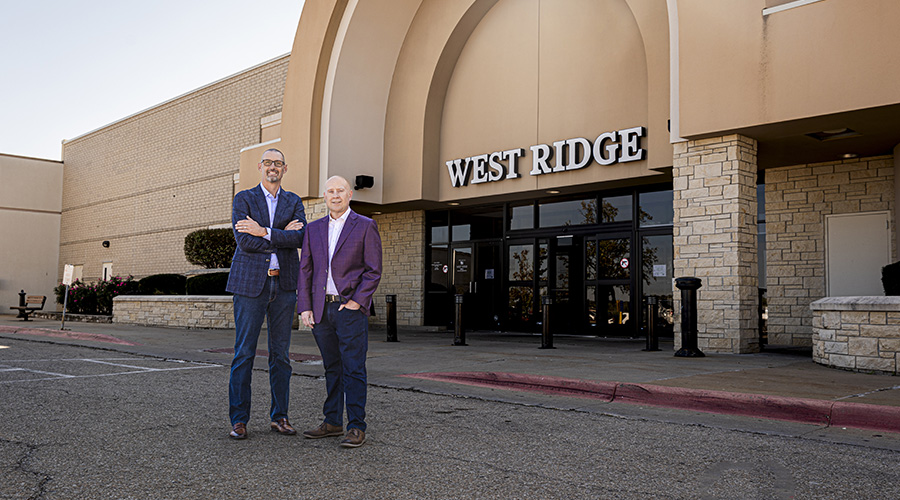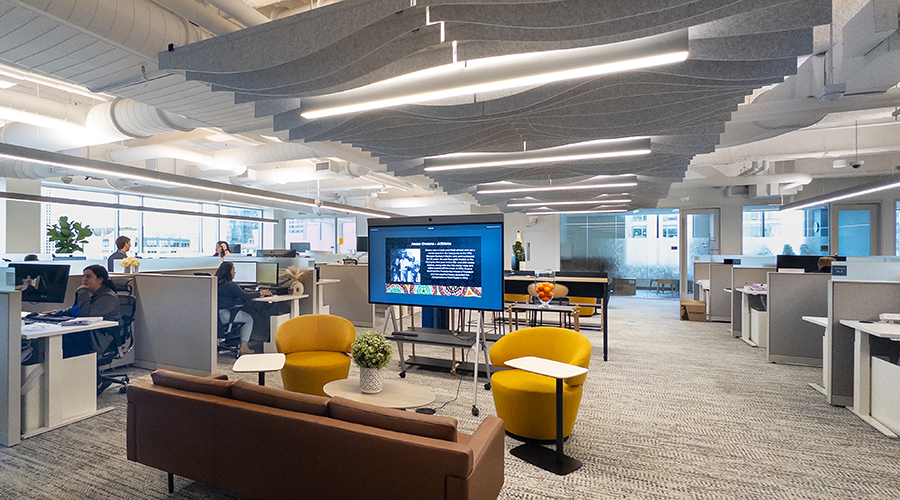 The demand for video conferencing facilities in all shapes and sizes is increasing in the workplace.Alise O’Brien Photography
The demand for video conferencing facilities in all shapes and sizes is increasing in the workplace.Alise O’Brien PhotographyUse Technology, Personal Workspaces To Encourage Productivity
An increase of smaller meeting spaces — especially those with video conferencing and other technology — can encourage employees to collaborate when required, but still leave space for private desks, as well.
Personal choice in the workspace is a hot-button topic in high-performance spaces. But facility managers can’t just throw together a mish-mash of elements, call it “choice,” and wash their hands. Elements have to specifically serve a purpose that supports the business function of the enterprise, or else it will be ineffective.
“Work has become much more varied in nature,” says Joseph White, director of workplace strategy at Herman Miller. “But that variety should be very specific.” The recipe for getting the right mix is understanding the organization’s culture and its ultimate goals, as well as the character of the organization, he says. Are employee interactions more intimate and face-to-face or more about collaboration between team members scattered around the globe? Do you have a more uniform workforce or a very diverse work force? To that, add a fine-grained understanding of the activities that need to happen everyday to meet the organization’s objectives.
“Those three together start to point towards the purposeful variety within the environment,” says White. “It starts to tell you about the right mix of the different types of spaces that you’ll need and the character of those spaces as well.”
One key space in a high-performing office is gathering space. In the past, this has been served by a conference room, but as more and more varied activities have been incorporated into the workspace, conference rooms have become too large and unsuitable. For example, a conference room set for 10 people will often be used by a small group or by two people needing a space for a private conversation. This leaves up to eight seats unused and potentially leaves eight people out in the general office hunting for a place to meet.
To solve for this, there is an increase of more and smaller meeting spaces. “Instead of one type of conference room that varies in size, we’re seeing as many as six distinctly different physical environments for groups to come together,” says White.
One of the types of gathering spaces that has seen a lot of growth is video conferencing spaces. “There is an increased need to collaborate,” says Elisabeth Post-Marner, principal at Spacesmith. “Global alliances are important — communication within the organization and outside the organization. We’re seeing a tremendous amount of video conferencing in all shapes and sizes.”
In addition to providing access to technology, the technology itself is impacting how the space is configured. For example, touch screens, both in mobile tablet devices and larger stationary touch screens in a meeting room. How much space is needed to stand comfortably in front of the screen and interact with the other people in the room is one question to consider. “Those human factors, understanding those dynamics of what’s happening when you’re leveraging a tool and then looking at the physical environment start to give some strong clues as to whether a physical space will be coherent with the tool that you’re trying to use,” says White.
The importance of collaboration space is also manifesting in a shift of how circulation space is used. Traditionally, circulation space was essentially dead space serving only as a means to get from one point to another and accounted for about a third of the total square footage of the workspace. In high-performance spaces, circulation space was observed in the Herman Miller study to be up to 50 percent of the space and was being used as connection space.
“That ability to move around in a more gracious way that allows you to bump into a colleague, step to the side, share a conversation and spark a new idea — you see a lot of value from that dynamic being afforded,” says White. “When you see organizations stating goals like promoting knowledge sharing or stimulating innovation within the organization, having space for people to meet like that becomes key to meeting those goals.”
Related Topics:
















